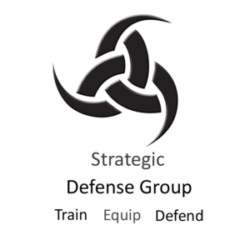Have you ever had a flat tire? It is pretty lousy, huh? No matter the kind of day we are having a flat tire always makes it worse. Thankfully a flat tire does not directly effect our engine performance, interior climate or comfort, radio, brake lights, etc. Even though the only thing effected is 25% of our tire ensemble the car becomes much less effective, almost worthless for transport. It is essentially taken it out of service, even if only temporarily.
Combat effectiveness can be defined in this context as: Any means or cause that provides one with an advantage in combat. The car has become less effective, without totally destroying it. Translate that analogy to a fight. If you break a guys hand, elbow, knee, or gouge an eye you have not destroyed the opponent, however, he has become much less effective in the fight. He cannot punch if his arm does not work, nor can he chase you if his knee bends the wrong way. Oh, and don’t forget breathing and eyesight, damage those and you have the upper hand!
If you damage more than one system, ie: eye, knee, and elbow, you have what is called compound trauma. This wreaks havoc on your opponent and gives you a marked advantage. Before we get carried away, let’s take a look at a few specific target points that can make one less effective in a fight.
- Eyes – can’t see, can’t fight.
- Throat – Can’t breathe, again, can’t fight.
- Knee – Fairly fragile and hugely important, can’t walk on a knee that bends the wrong way.
- Elbow – Like the knee but more fragile, bend it the wrong way and they can’t use their arm.
- Hand – Break it and they can’t grip. That means no fist, knife, or gun for that hand.
- Liver – I’ve seen guys black out over a good liver strike. It disrupts your system and your body does not like it.
- Ears – Clap these bad boys hard and you cant stand up straight due to ruptured ear drums.
These are just a few of a long list of combat effective points on the human body. Some more effective than others, and some more potentially lethal than others. For example, punching someone in the throat is potentially lethal, whereas breaking an elbow is not likely to cause death. So, you need to understand the level of force you are using and apply it appropriately.
Pain. Pain is good, and can help you win a fight. But let me make one thing quite clear, pain is not sufficient to end most real fights. In fact someone who is under the influence of adrenaline, drugs, and/or alcohol is not likely to feel pain, and certainly not to the extent that you would like. That is precisely why you did not see a kick to the groin on the list above. While you can do some real damage to a fella this way, it is primarily pain. If however you lower that kick to the knee, he is likely to lose his immediate ability to walk. In a fight, your goal should be to prohibit the body’s ability to function, not inflict pain.
You can be combat effective without a gun. In a very large arsenal of tools a gun has a very important place, however, it is pretty limited in its use and ability. Hands/feet, sticks, pepper spray, contact weapons, etc. are all tools you can use to be highly combat effective. What is most important is that you learn and train. Then, you train and train some more. Never become complacent.
What can we learn?
- You can be effective in combat or a fight without destroying your opponent entirely.
- Learn the human body and what makes it work, then you will know how to shut it down.
- Pain is not enough to end a fight, you need to stop the body from working.
- Know and understand what level of force you are using and apply it appropriately.
- Never give up, and never stop learning
Stay Sharp,
Adam
